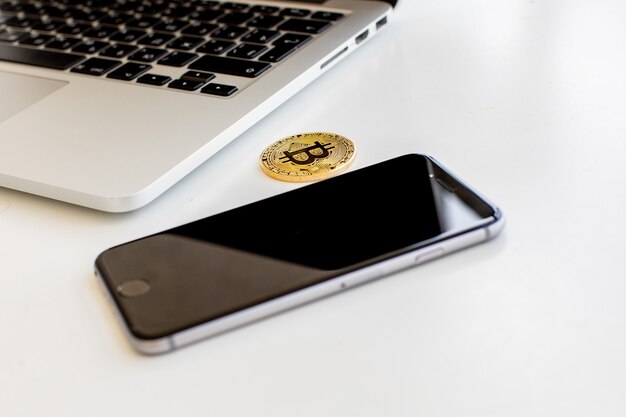How to Securely Set Up a Crypto Wallet: A Comprehensive Guide
Stepping into the world of cryptocurrency can feel like venturing into uncharted territory. With so many terminologies and concepts to grasp, one of the first critical steps is understanding how to get a crypto wallet. This article will walk you through the process, providing clarity on the essentials and guiding you on securing your digital assets for the future.
🔍 Understanding Crypto Wallets: What Are They?
A crypto wallet, at its core, is a digital tool that allows users to store and manage their cryptocurrencies. While the term "wallet" might suggest that it holds actual coins, crypto wallets instead store the private keys that are essential for accessing and managing your cryptocurrency balances on the blockchain.
Types of Crypto Wallets
Crypto wallets can be broadly classified into two main categories: hot wallets and cold wallets.
Hot Wallets: These are connected to the internet and are best for frequent transactions. They offer convenience and usability.
Cold Wallets: These store your private keys offline, enhancing security against online threats. Ideal for long-term storage.
Within these categories, there are various types:
- Desktop Wallets: Software installed on a personal computer.
- Mobile Wallets: Apps available on smartphones for easy access on the go.
- Web Wallets: Browser-based wallets but require caution due to their online nature.
- Hardware Wallets: Physical devices storing keys offline, ensuring high security.
- Paper Wallets: Physical paper containing your keys, though not as common today due to susceptibility to physical damage.
💻 Setting Up a Hot Wallet
When beginning your crypto journey, hot wallets are typically the most user-friendly option. Here's a step-by-step guide to setting one up:
1. Choose a Reputable Wallet Provider
It's essential to research and select a wallet service trusted in the crypto community. Look for reviews, community feedback, and expert opinions.
2. Download and Install the Wallet
For desktop wallets, download the software from the provider's official website. Mobile users should download apps from trusted app stores to avoid malware.
3. Create Your Wallet
Upon opening the software or app:
- Follow the setup prompts to create a new wallet.
- Securely store your seed phrase (a series of words unique to your wallet). This is crucial for recovering your funds and should never be shared.
4. Set Up Security Features
- Enable two-factor authentication (2FA) to add an extra layer of security.
- Set a strong, unique password for your wallet account.
5. Backup Your Wallet
Regularly back up your wallet, ensuring that your keys and seed phrases are stored in secure, multiple locations. Consider using encrypted digital storage or physical safes.
🔒 Safeguarding with a Cold Wallet
For those prioritizing security over convenience, cold wallets offer a superior solution.
1. Select a Hardware Wallet
Research and purchase a hardware wallet from a reputable manufacturer to avoid counterfeit products. Each device comes with setup instructions tailored to its design.
2. Initiate Wallet Setup
- Connect the wallet to your computer using the provided cable.
- Follow the prompts to set up your wallet, again ensuring you securely store the generated seed phrase.
3. Transfer Crypto Assets
Once setup is complete, transfer the desired amount of cryptocurrency from your hot wallet or exchange to your hardware wallet's address.
4. Store Your Wallet Securely
Place your hardware wallet in a safe and secure location, ensuring it's protected from physical harm and unauthorized access.
🌐 Evaluating Online Wallets
Some prefer web wallets due to their convenience and ease of access, especially for small-scale or regular transactions. Here's how to proceed with caution:
1. Continuous Vigilance
Regularly check for phishing attempts and ensure that you're using the correct URL to access your wallet.
2. Use Secure Connections
Always access your web wallet over a secure (HTTPS) connection, especially when using public networks.
🛡️ Enhancing Your Crypto Wallet Security
Regardless of the type of wallet you choose, these security measures are pivotal:
- Regular Software Updates: Ensure all wallets and associated software are up-to-date to protect against vulnerabilities.
- Educate Yourself on Scams: Keep informed about common crypto scams to recognize and avoid them.
- Monitor Wallet Activity: Regularly check transaction history to identify any unauthorized or suspicious activity swiftly.
📋 Quick Tips for Crypto Wallets
Here's a handy summary to keep in mind as you navigate the crypto wallet landscape:
- 🏦 Pick the Right Wallet Type: Choose based on your security preferences and transaction needs.
- 🔒 Secure Your Seed Phrase: It's irreplaceable and the key to your funds.
- ⚙️ Utilize Two-Factor Authentication: Adds an essential security layer.
- 📥 Regular Backups: Protect your digital assets from unforeseen circumstances.
- 🌐 Be Cautious with Online Wallets: Preferred for minor transactions due to their potential vulnerabilities.
- 🔄 Keep Software Updated: Protect against new threats by staying up-to-date.
The Road Ahead in Cryptocurrency
In the dynamic realm of cryptocurrency, having a secure crypto wallet is foundational to safely managing and investing in digital assets. By understanding the types of wallets available and adopting best security practices, you empower yourself to navigate this exciting world with confidence and peace of mind.

Related Topics
- Can a Masters Student On F1 Student Invest In Crypto
- Can I Buy Crypto On Fidelity
- Can I Buy Crypto With a Credit Card
- Can You Buy Crypto With a Credit Card
- Can You Day Trade Crypto
- Can You Short Crypto
- Do You Have To Pay Taxes On Crypto
- Does Crypto Arbitrage Work Reddit
- How Can I Buy Crypto
- How Do I Buy Crypto